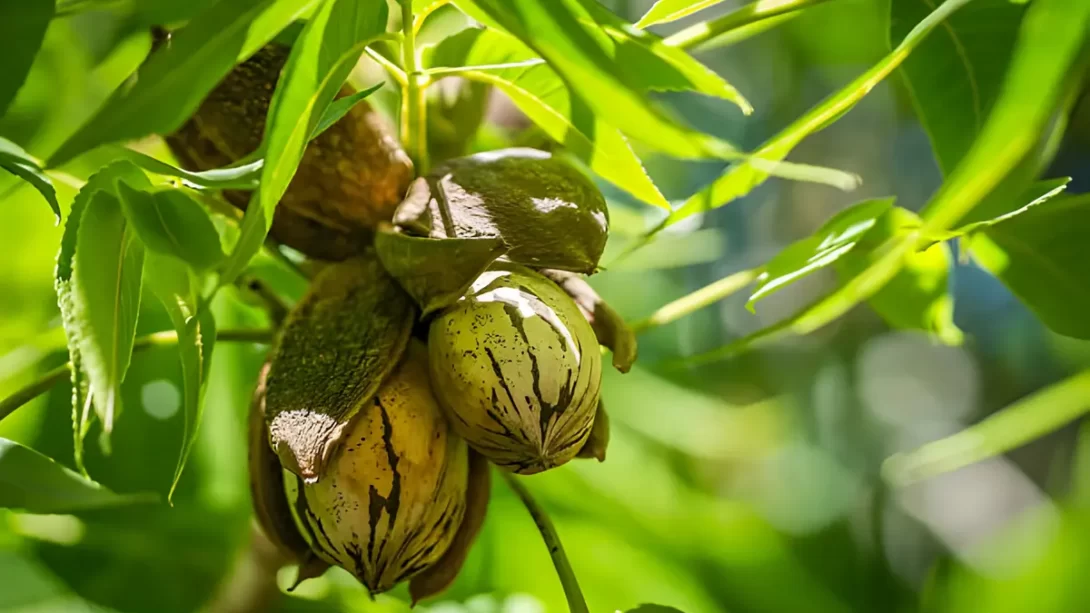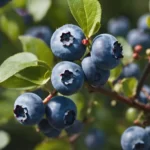The pecan tree, a majestic and valuable species, holds a significant place in both agriculture and culinary worlds. Known for its delicious nuts, the pecan tree’s lifecycle, particularly its blooming phase, is crucial for growers and enthusiasts alike. Understanding when and how pecan trees bloom can greatly impact the cultivation process and the yield of pecan nuts. This article aims to explore the blooming cycle of pecan trees, providing insights for optimal growth and harvesting.
Overview of Pecan Trees
Pecan trees are large deciduous trees, commonly found in the southern United States, that belong to the hickory family. They are known for their long, straight trunks and wide, spreading canopies. Typically, a pecan tree can grow up to 70-100 feet tall. Pecan trees not only produce valuable nuts but also contribute to the landscape’s beauty. They thrive in regions with long, warm growing seasons, which is why they are predominantly grown in states like Georgia, Texas, and New Mexico.
The Blooming Cycle of Pecan Trees
The blooming of pecan trees is an annual cycle that is essential for nut production. This process usually begins in the spring, but the exact timing can vary depending on the geographic location and local climate conditions.
- Bud Formation: In late winter or early spring, buds on the pecan tree start to swell, signaling the onset of the growth season.
- Flower Development: As the weather warms, these buds develop into flowers. Pecan trees are monoecious, meaning they produce both male and female flowers on the same tree, though they typically do not self-pollinate.
- Timing Variations: In the southern regions of the United States, pecan trees may start blooming as early as April. In the northern parts of their growth range, blooming can occur as late as May.
Understanding the blooming phase of pecan trees is crucial for farmers and gardeners, as it directly impacts the pollination and eventual nut yield of the trees.
Types of Pecan Flowers
Pecan trees produce two distinct types of flowers, which play a critical role in their reproductive process:
- Male Catkins: These long, slender, and drooping flowers produce pollen. Typically grouped in threes, they are the more noticeable flowers during the blooming period.
- Female Flowers: These are smaller, less conspicuous flowers that develop into the pecan nuts after fertilization. They are usually found at the tips of the branches.
Understanding the structure and function of these flowers is key to comprehending the pecan tree’s pollination and nut production process.
Factors Influencing Blooming
Several environmental and biological factors influence the blooming of pecan trees:
- Temperature: Pecan trees require a certain amount of chill hours (periods of cold temperature) during the winter to stimulate bud break and subsequent flowering.
- Soil Conditions: Well-drained, fertile soil is ideal for the healthy growth and blooming of pecan trees. Soil quality can significantly impact overall tree health and bloom intensity.
- Sunlight: Adequate sunlight is crucial for the blooming and overall health of pecan trees. Trees planted in shaded areas may have reduced or delayed blooming.
- Tree Age and Health: Generally, pecan trees start to bloom and produce nuts between 6 to 10 years of age. The health of the tree also plays a significant role; stressed or diseased trees may have poor or no bloom.
Pollination and Fertilization
Pollination in pecan trees is primarily wind-driven. Here’s how it works:
- Wind Pollination: The male catkins release pollen, which is carried by the wind to the female flowers. This process is highly dependent on the right wind conditions.
- Cross-Pollination: For successful fertilization and optimal nut production, pollen from a different pecan tree variety is often necessary. This is why many pecan orchards plant multiple varieties to ensure effective cross-pollination.
- Fertilization: Once the female flowers are pollinated, the fertilization process begins, eventually leading to the development of pecan nuts.
Pollination and fertilization are critical phases in the life cycle of a pecan tree, directly affecting the quantity and quality of the nut harvest.
Post-Bloom: Nut Development and Maturation
After the flowering and pollination stages, the pecan tree enters a crucial phase of nut development and maturation:
- Nut Development: Once fertilized, the female flowers gradually develop into pecan nuts. This process is marked by the growth of the green outer husk, which encases the developing nut.
- Maturation Period: The nuts mature over the summer months, typically taking around five to six months from pollination to reach full maturity. The maturation timeline can vary based on the pecan variety and environmental conditions.
- Harvest Time: By early to late fall, pecan nuts are usually ready for harvest. The readiness for harvest is indicated by the splitting of the husks and the nuts beginning to drop from the tree.
Understanding the timeline from bloom to nut maturity helps growers in planning and optimizing their harvesting practices.
Care and Maintenance for Blooming
Proper care and maintenance of pecan trees during the blooming season can significantly impact their health and productivity:
- Watering: Regular and deep watering is crucial, especially during dry periods, to support the tree’s growth and nut development.
- Fertilizing: Applying a balanced fertilizer helps in providing essential nutrients that the tree needs for blooming and nut formation.
- Pruning: Proper pruning not only helps in shaping the tree but also improves sunlight penetration and air circulation, which are vital for healthy blooming.
- Pest and Disease Management: Regular monitoring and timely intervention can protect the tree from pests and diseases, which can adversely affect blooming and nut production.
Consistent care throughout the year, especially during the blooming and growing seasons, ensures the health and productivity of pecan trees.
Conclusion
The blooming of pecan trees is a complex yet fascinating process that is integral to the production of pecans. From understanding the types of flowers to the factors affecting bloom and the subsequent nut development, each stage plays a crucial role in the life cycle of a pecan tree. For growers, gardeners, and enthusiasts, appreciating these phases can enhance the management and enjoyment of these magnificent trees. With the right knowledge and care, the blooming of pecan trees can be a rewarding experience, culminating in the much-anticipated harvest of delicious pecans.



